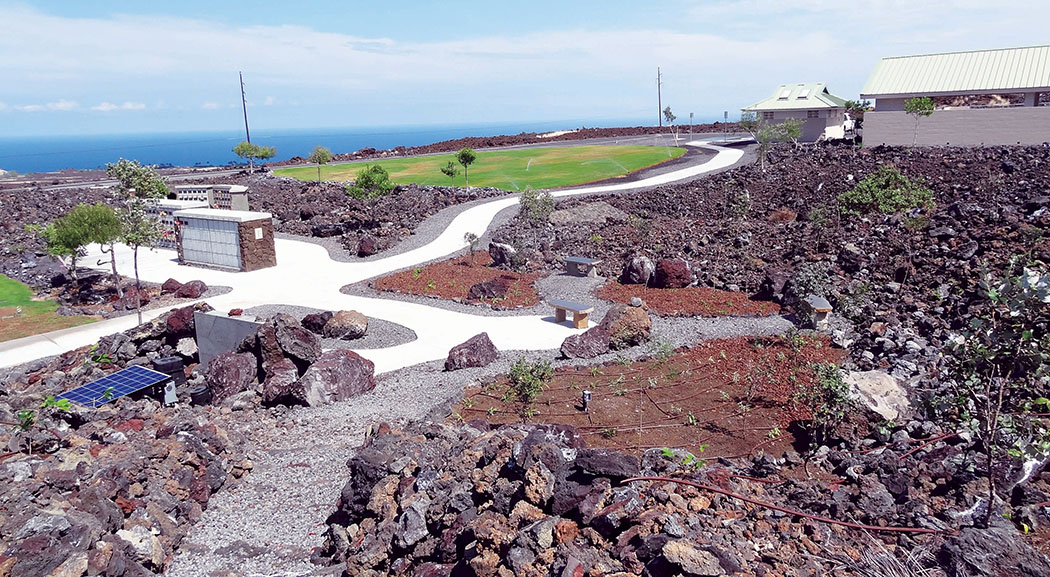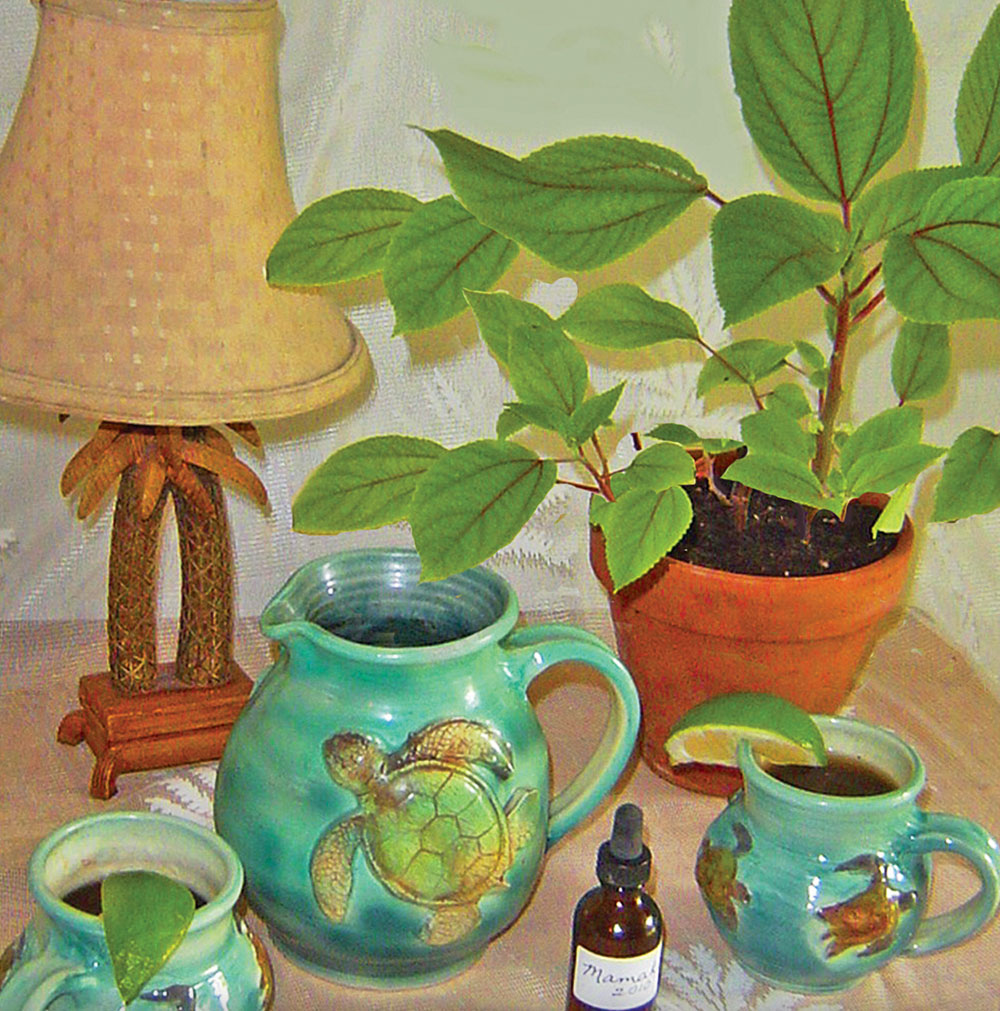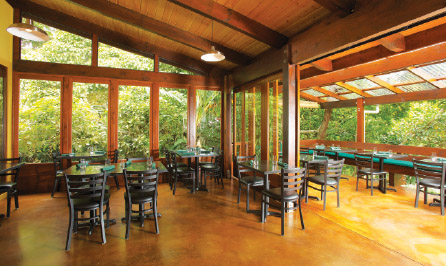
Healing Plants: Kamani
By Barbara Fahs
The Internet is full of sites that tout the healing benefits of “tamanu” oil. This nut tree, which is native to the South Pacific islands around Tahiti, is also present in Hawai‘i where it is known as kamani. The forward-thinking Polynesians who first settled our islands introduced it because it was important to them both as lamp oil and as an aid in healing the skin.
What is the Kamani Tree?
Kamani (Calophyllum inophyllum) is also called Alexandrian laurel and is related to the mangosteen (Garcinia mangostana). Both of these trees belong to the Clusiaceae family, which also includes the invasive autograph tree (Clusia rosea). Although kamani trees with their three-to-eight inch long leathery leaves resemble this undesirable plant, the kamani is not listed as invasive by the Hawai‘i Ecosystems at Risk Weed Risk Assessment. Today, kamani trees continue to offer shade, food, and medicinal benefits.
Where Kamani Grows
Known as the “tree of a thousand virtues,” kamani trees grow well at low elevations and can tolerate salt spray and salty soil. Many kamani trees grow in East Hawai‘i, along the sides of the Old Government Road that connects Hawaiian Paradise Park with Hawaiian Beaches, indicating that ancient villages existed thereabouts.
Practical Uses
 The kamani tree has many uses—its strong timber, which boat builders of former times used for hulls and keels, and its nuts, which were used for lamp oil, skin problems, and massage. The kamani tree has characteristics that would make it a positive addition to the landscapes of modern homeowners.
The kamani tree has many uses—its strong timber, which boat builders of former times used for hulls and keels, and its nuts, which were used for lamp oil, skin problems, and massage. The kamani tree has characteristics that would make it a positive addition to the landscapes of modern homeowners.
The reddish-brown hardwood that kamani trees produce has been widely used for such items as canoes, houses, and pā kamani, which include bowls and trays used for food. Like milo and kou wood, kamani wood was favored for use with food because it does not impart any unpleasant odor or flavor.
Hawaiian residents of a former era extracted a dye from kamani nuts, which they used to dye kapa cloth a brown shade.
The small, one-inch flowers have golden yellow stamens and a pink pistil. They smell much like orange blossoms and were used in lei and to give kapa cloth a fragrance.
Medical Uses
The oil that has been extracted from kamani trees is similar to kukui nut oil. It is a light, pleasant-smelling oil that burns well in lamps and also helps to promote the healing of many different types of skin wounds and diseases.
If you want to try some, it’s simple to make kamani oil at home. This is how:
- Use nuts that sink in water.
- Place them on a hard surface, such as a large, flat lava rock, and then crack them with a hammer.
- Remove the nutmeat and place it in a baking pan.
- Heat your oven to 450˚F then bake for 15 minutes.
- Let the nutmeat cool, mash it, and place it in a glass jar.
- Place the jar in the sun for about two days.
- Pour off the oil as desired.
- Keep the oil in your refrigerator and allow small amounts to reach room temperature before using it.
- To prevent the oil from becoming rancid, add five drops of grapefruit seed extract and two drops of vitamin E oil to each ounce of oil.
Growing a Kamani Tree
This slow growing tree can grow as tall as 60 feet, and like many other nut trees it can sprout numerous keiki trees in its vicinity when the nuts are not harvested or eaten by rats and pigs.
Kamani trees can tolerate some shade, so if you live in a sunny area, keep this in mind. According to Future Forests Nursery, kamani trees prefer sandy soil and an elevation from sea level to 1500 feet, but will also do well in clay or rocky soil.
To start a new tree, gather several nuts from an existing tree. Soak them in water overnight to hasten germination and then plant one nut in a one-gallon pot filled with potting soil. Keep your pot or pots in a sunny spot and keep the soil evenly moist until germination occurs—be patient, as this can take some time.
When seedlings are at least one foot tall, transplant to an area with plenty of space, since the root system of a mature tree can spread as wide as the mature canopy.
Kamani trees are resistant to most insect pests and plant diseases. To ensure continued growth and health of your tree, mulch around it with compost. ❖
Contact the writer
References/Sources
Mahalo to David Bruce Leonard for sharing this method of extracting oil from nuts from his book, Medicine at Your Feet.
EN.wikipedia.org/wiki/Purple_mangosteen
Instanthawaii.com/cgi-bin/hawaii?Plants.sigtree
Canoeplants.com/kamani.html
Botany.hawaii.edu/faculty/daehler/wra/full_table.asp.html
Forestnursery.com/pricelist.html#Anchor-CALOPHYLLUM-45648
Pbio209.pbworks.com/w/page/11342381/Clark,%20B%20-%20Kamani%20tree


